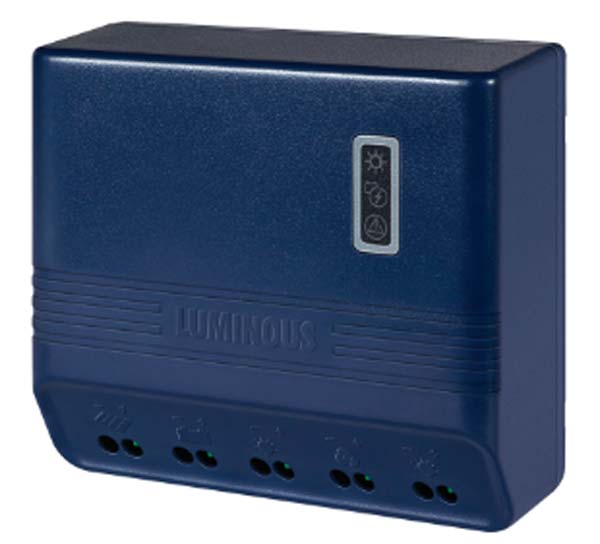 Solar Energy
Solar Energy
4 Ways to Choose the Perfect Solar Charge Controller for Home
Although a solar charge controller is a minor component of the total solar power system, its effectiveness is critical to overall operation. Its proper configuration and type contribute to the system's optimal output and smooth operation. As a result, selecting the appropriate solar charge controller for your home is important. Let's have a look at how it works and what it does.
In practicality, all solar systems require battery backup, and hence a solar charge controller is necessary. A solar charge controller is an electronic device that regulates voltage from the solar panels to the battery when it is installed between them.
What are the functions of a solar charge controller?
● Solar panels work by pushing current in one way via your battery. At night, the panels may pass a little amount of current in the opposite way, causing the battery to deplete slightly. Although, the potential loss is minimal, it is easily avoidable. Charge current runs via a semiconductor (a transistor) in most controllers, which works as a valve to control the current. It's referred to as a semiconductor since it only allows current to flow in one way. A solar charge controller stops reverse current flow without requiring any additional work or expense.
● When the battery voltage ranges to a certain level, the flow of energy is reduced to protect the battery from overcharging. The charge controller allows complete energy flow into the battery when the voltage of the battery declines due to decreased sunshine or increased electrical use.
● It prevents the flow of reverse current back to the solar panels which do not produce current at night, so their potential in relation to the battery is decreased. We're aware that current flows from higher to lower potential (Battery to solar panel in this case). It's possible that electricity will flow from the battery to the panels, which can damage the solar panels.
The Types of Solar Charge Controllers
Solar charge controllers that are regularly used in solar power systems:
Solar charge controller with PWM (Pulse Width Modulation) and MPPT (Maximum Power Point Tracking) technology are available in the market. These charge controllers use advanced technologies to change their charging rates based on the battery's current charge level.
Let’s understand the functioning of solar charge controllers with different aspects affecting their performance:
● Temperature:
As temperature drops, the solar module's Vmp rises, causing a greater voltage difference between the battery and the panel. Because MPPT charge controllers can track or detect excess voltage and convert the difference into comparable amperage, they are useful. As a result, in lower temperature settings, MPPT technology outperforms PWM technology in terms of harvesting power.
● When the system is Small:
A PWM controller is better suited for a small power solar system since it functions at a high harvesting efficiency regardless of the solar system's size. With a small solar power system, however, the MPPT charge controller's harvesting efficiency is minimal. As a result, a PWM charge controller is a superior and more cost-effective solution for low-power applications.
● Increase in the array size in relation to the load:
When the size of the panels is large enough in relation to the amount of electricity taken by the load, the battery will nearly always be fully charged. In this case, the PWM charge controller is more appropriate and cost-effective than the MPPT charge controller.
● Cost of Solar Charge Controllers
PWM charge controllers are less expensive than MPPT charge controllers in terms of system cost. As a result, PWM charge controllers are less expensive than their analogue counterparts.
By examining the above-mentioned parameters, you may determine which sort of solar charge controller is best for your solar system. You should always purchase solar charge controllers and other products used in a solar system from a reputed brand like Luminous. Luminous has one of the widest portfolios of solar products in India. Check out their website and know more.
Support Our Journalism
We cannot do without you.. your contribution supports unbiased journalism
IBNS is not driven by any ism- not wokeism, not racism, not skewed secularism, not hyper right-wing or left liberal ideals, nor by any hardline religious beliefs or hyper nationalism. We want to serve you good old objective news, as they are. We do not judge or preach. We let people decide for themselves. We only try to present factual and well-sourced news.







